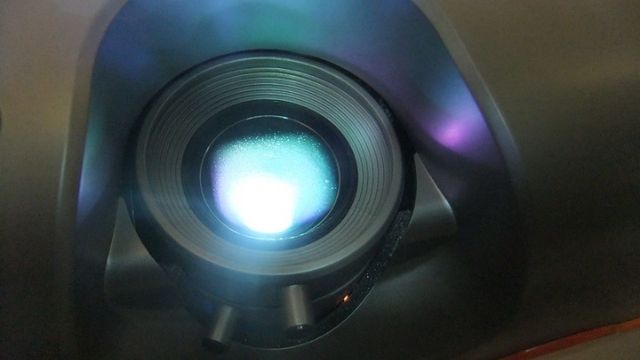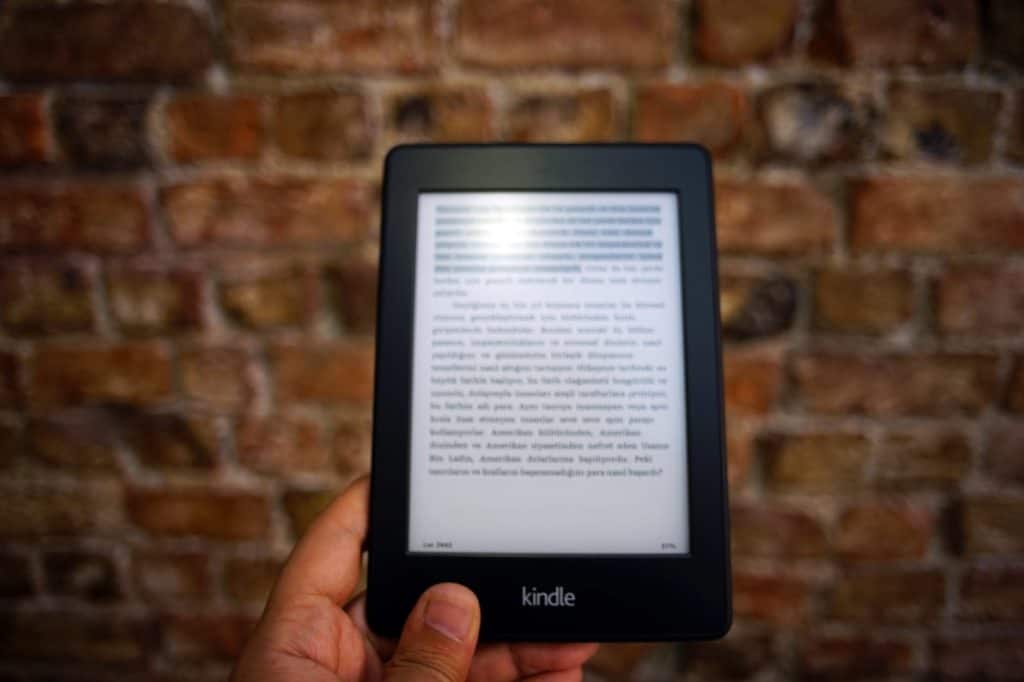
Blue light is natural and is present everywhere. It is a wavelength of visible light in the electromagnetic spectrum. Artificially produced blue light also floods our surroundings. This form of blue light generally emanates from devices that emit light.
Projectors, like any other screen and lightbulb, emit blue light. Generally, blue light is damaging to the eye, but the blue light from projectors does not directly enter the eyes. Projectors are thus safer blue light emitters than say TV screens.
Since there is a larger distance between you and a projector, the impacts of blue light on your retina and nervous system are less. While it is safer, a prolonged movie session with a projector will still have repercussions on your eyes.
This article explains the occurrence of blue light and compares blue light emission between projectors and television sets. So, keep reading!
The Mechanism Of Blue Light Emission In Projectors
Compared to TVs or phones, projectors emit light on a screen that is then reflected back in our eyes. Blue light is in the region of visible light having the smallest wavelength, hence uses more energy.
We generally receive blue light from the sun. However, artificial blue light is also present in the environment. Electronic devices that have a screen use LED back-light technology.
Usually, backlighting comes in two categories: white LED back-light or RGB LED back-light. Screens that cannot produce their own light use this technology.
For this reason, Liquid Crystal Display (LCD) monitors often use this form of illumination. One particular characteristic of this type of screen lighting technology is that it enhances brightness and clarity.
LED back-lights illuminate the screen from the side or the back. This lighting system emits a lot of High Energy Visible (HEV) light, including blue light.
Protecting Yourself Against Blue Light
Whether it is direct or indirect, blue light poses a serious risk to our health. Therefore, it is best to limit our exposure to blue light.
This can be done through simple actions:
- Keep your eyes moist using eye drops when using blue-light-emitting devices
- Download and use a blue light filter app on your phone or computer
- Cut down on screen time, especially for kids
- Use blue light blocking glasses like the Defendershield glasses Blue Light Blocking Glasses – Signature Series – Kids Series
- Take regular breaks away from screens
- Dim the brightness of the screen of devices
- Do not use your phone after 9 p.m
- Use low blue light bulbs
- Do eye exercises after prolonged use of the screen
- Have regular eye check-ups
How Much Blue Light Do They Emit?
There is no doubt that projectors emit a lot of blue light. However, the effect of this blue light is less harmful as the light that enters our eyes is reflected from a screen.
Blue light has a wavelength of 450 to 495 nanometers, which makes it one of the shortest wavelengths of visible light. Small wavelength also means higher frequency and more energy.
While projectors emit blue light in large amounts, it is safer to use as compared to a mobile phone or television. The light from the projector’s lens does not travel directly to our eyes.
It first falls onto a screen on which the image can be seen. We only detect the reflected light off the screen. There is virtually no harmful blue light at this point.
The Impacts Of Blue Light
Most of us spend a lot of time staring at screens. This can be bad for the eye given the amount of blue light that we are exposed to. Digital eye strain is a common negative impact of blue light among computer users. This results in irritation of the eye, dryness, and sometimes blurred vision.
Other potential health concerns include headaches, facial muscles fatigue, and sore eyes. Blue light might also cause damage to the retina as it can travel as far as the back of the eye, beyond the retina.
Phototoxicity can be very detrimental to the eye. It often leads to macular degeneration whereby the center of your field of vision becomes blurred and other visual impairments.
Moreover, natural blue light helps your circadian rhythm, that is your sleep cycle. During the day, there is a high amount of blue light in the environment. This boosts your alertness and mood.
In the evening, the amount of blue light decreases which signals your body to release melatonin, the sleep-inducing hormone.
Studies from the Proceedings of the National Academy of Sciences (PNAS) have shown that exposure to blue light in the evening disrupts our natural sleep cycle.
This can have serious consequences for our health. A disrupted or delayed sleep cycle can result in drastic metabolic changes and a decrease in the level of leptin, a chemical that signals satiety after a meal, according to Harvard University.
An off-balance circadian rhythm can also increase the risk of developing hormone-related cancers. Furthermore, overexposure to blue light is detrimental to the health of children.
Children are particularly sensitive to metabolic changes due to blue light. Also, blue light can have harmful impacts on the cognitive functions of a child.
This can have adverse effects on the development of the child; speech delay and difficulty maintaining focus are pertinent examples.
Tv vs Projectors
TVs and projectors emit blue light in relatively the same amount. However, TV’s direct blue light does more harm to the eye than the indirect blue light the eye receives from projectors.
Watching TV increases the risk of eye injuries as TVs are a major source of direct blue light. The light from TVs can also be too bright sometimes.
The smaller screen of televisions can also lead to eye discomfort. You might strain your eyes trying to see the details in an image.
On the other hand, projectors emit a ray of light towards a screen. It is only the reflected light that bounces off the screen that finally enters your eyes.
Therefore, the intensity of blue light from projectors is not as intense as that from TVs, decreasing significantly the risk of eye injuries.
Also, the large screen used with projectors improves eye comfort for all viewers. Some projectors also come with safety features such as the switching off of the beam when objects are too close to the lens.
This ensures that there is no accidental eye injury.
With these easy tips, you ensure that your eyes and nervous system are protected against any health risks.


